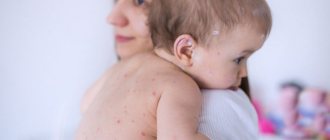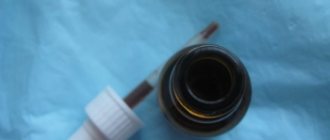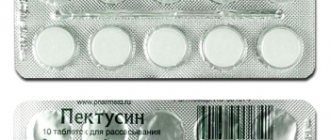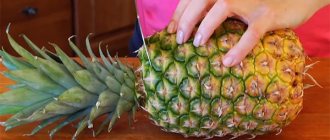All parents have to go through unpleasant moments when their child falls. As soon as the baby begins to walk and run, various dangers await him everywhere. The main thing is to prevent the formation of a scar at the site of injury or to properly get rid of scar formation on the skin if it does appear.
General information
Scars in children are not uncommon, no one is immune from this. That is why it is so important that parents know how to combat their occurrence.
In order to choose the right method of control, it is necessary to determine the type of scar. A specialist can help with this issue. There are three types of scars.
- Atrophic. The consequences of diseases that appear on the skin. Occurs when collagen is not produced enough.
- Hypertrophic. It occurs in the same situations, but it is characterized by excess collagen.
- Keloid. The result of incorrect tissue fusion, as well as the consequence of burns.
To remove scars, special ointments and creams purchased at the pharmacy can be used. In pediatrics, Kelofibraza, Contractubex, Dermatix are prescribed. These drugs will help cope with both fresh and old scars. To choose the right product, you need to visit a specialist and consult with him.
The presence of scars can cause psychological discomfort, as well as unpleasant sensations, such as a burning sensation or itching. Scars can appear due to mechanical damage to the skin, scratches, scratching, bites, cuts, burns, injuries, past diseases such as lupus erythematosus, fungal infection, chickenpox. In childhood, the healing process is faster because there is a high rate of cellular regeneration.
Often the child himself provokes the appearance of scars due to the fact that he begins to scratch the wound or when he interferes with the treatment with an antiseptic, thereby slowing down the healing process and promoting the development of the scar.
If we consider the appearance of a scar on the face, then it is necessary to take into account that as you grow older, it will begin to increase, stretch, and deform, which can complicate the life of a teenager and an adult.
Is it possible to remove scars in children with laser?
Laser removal of scars in children is not recommended unless absolutely necessary. However, in rare cases such a procedure is allowed. But to do this, you should take into account the child’s age, the complexity and nature of the scars, as well as other physiological characteristics of the baby.
Since the child is still growing, this can lead to various discomforts in the area of scars and scars. Many children complain of severe itching and burning in areas of healed injuries. This is due to the fact that deformed areas can greatly tighten the skin, since the growth of connective tissue of the scars does not keep pace with the growth of the epidermis.
In addition, there is also an aesthetic moment. A scar not only brings discomfort to a child, but can also cause the development of psychological complexes, especially if it is located on open areas of the body - face, arms, neck.
Laser scar resurfacing is not recommended for children. However, in severe cases, the use of this method of therapy is allowed.
Before using a laser, the age of the child must be taken into account. The procedure should not be performed if he is under 14 years of age. For large lesions, therapy can be carried out from 10 years of age. For children of primary school and preschool age, treatment is prescribed if there is an urgent need, depending on the location of the scar.
This treatment method is contraindicated for newborn patients, since laser scar resurfacing can lead to various complications.
Laser removal of scars in children can only be performed if there are certain indications:
- minor injuries and damage to the skin - abrasions, cuts, scratches;
- minor burns;
- keloid and hypertrophic scars.
Therapy can also be carried out for post-acne scars and acne scars.
Contraindications:
- newborn age;
- violation of the integrity of the skin at the intended sites of exposure;
- diabetes;
- congenital renal, liver or heart failure;
- blood diseases;
- infectious pathologies;
- other dermatological diseases in the acute phase;
- poor blood clotting;
- development of tumor processes.
Also, laser removal of scars in children is not recommended for long-term use of various drugs that affect coagulation processes.
There are 2 ways to remove scars and scar tissue in childhood - laser peeling and nanoperforation. Each procedure is selected individually according to the severity of the injury and the affected area.
Resurfacing a child's scar with a laser can be done using innovative methods. One such method is nanoperforation.
The essence of the therapy is to expose the damaged area to a laser beam, which breaks up into thousands of microscopic beams of light. If they come into contact with the skin, they cause damage. As a result of this effect, the epidermis begins to intensively produce collagen and elastin, which leads to regeneration and renewal of skin cells.
The method is the most gentle because it does not cause thermal damage and can be used even on delicate areas of the body.
In order to remove a scar with a laser, a child needs to undergo 5 sessions. In rare cases, results can be achieved after just one or two procedures.
After exposure, slight redness is possible, which goes away on its own within a few days.
The duration of rehabilitation after laser treatment of scars in children ranges from 1 to 2 weeks.
This method involves the impact of laser beams on the epidermis, as a result of which dead skin particles are “cleaned off” and natural regeneration processes are launched.
Depending on the complexity of the problem, the doctor may change the depth of exposure.
Laser resurfacing of scars in children can be carried out using the following techniques:
- “Cold” – superficial cleansing of the skin with a small depth of beam penetration. Used for minor defects.
- “Hot” – affects the deeper layers of the epidermis. Used in difficult situations.
The duration of the sessions depends on the amount of work and ranges from 15 minutes. up to 1 hour. The number of procedures is determined individually.
Complete rehabilitation takes from 3 to 5 days.
Removal of scars or scars can be carried out not only with laser, but also in other ways that are safe for the child. The most popular methods are:
- Microdermabrasion is a hardware removal of the upper layer of the epidermis (dead tissue). This type of treatment helps to cope with various scars and damage to the skin, with the exception of atrophic and keloid scars. In addition to removing dead particles, the device stimulates healthy cells for further regeneration. Microdermabrasion can be performed as a complement to laser removal of scars not only in adults, but also in children.
- Jessner peeling is a procedure in which a special composition is applied to the affected area to help remove the top stratum corneum of the skin. For small scars, results are visible after the first session.
- Injection treatment. These procedures are especially effective against atrophic scars. The solutions include collagen, which is injected into the area of the defect. You should consult your doctor in advance about whether it is possible to remove various scars on a child with injections.
- Cosmetics (medicines). This group includes various creams, ointments or gels. All of them are effective only for minor damage at the initial stage of healing. These drugs will not cope with large scars. To achieve a more pronounced therapeutic effect, it is recommended to use the compositions in conjunction with electrophoresis or fractional methods.
Also, laser treatment of scars in children can be supplemented with various physical procedures. The most effective are phonophoresis and electrophoresis. The first type of impact allows you to remove damage using ultrasonic waves, which has a beneficial effect on the condition of the entire body.
In the second method, the effect is carried out using various medications and small electrical impulses.
Any of the methods of polishing scars or scars using a laser beam in childhood should be used only after a preliminary examination and consultation with a doctor.
Did you like the article? Share with your friends!
The consequences of chickenpox
If this happens and scars have already formed on the little one’s body, you need to know what to apply to these formations in order to prevent the formation of a scar.
Fresh marks that have just formed must be treated medicinally, using topical preparations that affect the regeneration of the epidermis, increase the elasticity of the skin and its firmness.
If the question is how to remove scars on a child’s face that have formed quite a long time ago, then it is unlikely that you can do it with home methods; most likely, you will need to resort to visiting a beauty salon or a surgeon’s office. This question often begins to worry teenagers who are worried about their appearance, in particular, about traces of chickenpox long ago. For this purpose, silicone plates, microdermabrasion or laser resurfacing can be used.
If the baby has recently recovered from chickenpox and there are certain marks on the body, then the following medications may be prescribed:
- Bepanten - stimulates the restoration of skin structure;
- Rescuer - will help in the presence of fresh scars;
- Medgel - makes scars less noticeable and softens the skin;
- Dermatix - smoothes and softens scars, moisturizes;
- Mederma - has a stimulating effect on the regenerative function of the skin, and also has an anti-inflammatory effect;
- cocoa butter is a low-allergenic product and has a regenerating effect.
A scar after chickenpox may not appear if you follow certain rules. First of all, you should not allow your baby to scratch the rash.
- It is necessary that the clothes the child wears are breathable and made from natural materials. It should not hinder the toddler’s movements, rub or cause overheating.
- A sick baby's linen and clothes must be changed daily.
- It is important that the toddler has short-cut nails. If a baby has chickenpox, then you need to put gloves on your hands.
- It is important to promptly treat the blisters with medications that will reduce the feeling of itching and also have a protective effect against the proliferation of microorganisms.
- If the baby suffers from severe itching, then after consulting a doctor, you can use an antihistamine.
- When the temperature returns to normal, it is permissible to bathe the little one a couple of times a day. The main thing is to know that you do not need to rub your child with a washcloth or dry him with a towel. It is necessary to lightly blot wet areas.
Hardware methods
If you decide to go to a cosmetology office, then certain methods can be used to combat scars.
- Microdermabrasion. Cell regeneration is stimulated. This procedure is not suitable for keloid or atrophic scars.
- Laser resurfacing. Effective in combating the effects of lupus, as well as chickenpox.
- Jessner peeling. The composition includes lactic acid, as well as salicylic and resorcinol. The scar begins to shrink after the first procedure.
- The radical solution is to fill the scar with collagen. Using a thin needle, the substance is injected into the wound.
How to remove scars
If a child receives a deep wound, it must be closed in the first minutes after the incident using a special steri-strip plaster. This product is used as a less aggressive alternative to sutures. Periodically moisten the patch so that the wound heals evenly.
steri-strip patch
If time is lost and the child has a scar at the site of the injury, you can get rid of it in the following ways:
- Local medications: ointments, creams, gels containing plant extracts and vitamin E. These remedies are helpful in cases where the child has received minor injuries and this happened recently. Before use, it is recommended to test the regenerating drug by smearing a small area of skin near the elbow. If no allergic reactions occur, the product can be used.
- Surgical intervention. You will have to resort to it if a rough scar with jagged contours has formed.
- Laser grinding. This is the removal of the top layer of skin using a laser.
- Dermabrasion. It is the removal of the convex surface of scars using special equipment. This procedure is not suitable for children under 14 years of age.
All anti-scar products are effective for eight weeks after they form. Before any procedures, the child should be shown to a specialist doctor who will choose the best option for getting rid of the memorable mark.
Read also: A child fell and hit himself: how to feel sorry for and calm a child
Traditional methods
You can also get rid of fresh scars using traditional medicine. However, it is worth considering the likelihood of developing an allergic reaction, so it is advisable to use drugs with caution or after consultation with a pediatrician.
- Apple vinegar. Promotes rapid exfoliation of old skin. Take four parts of water and mix with one part of vinegar. Make a compress, which is applied three times a day for ten minutes.
- Honey. The area of the future scar is lubricated and covered with cling film, left for about fifteen minutes. The procedure must be carried out twice a day.
- Cocoa butter nourishes the skin, softens and smoothes it.
- Beeswax is mixed with olive or sunflower oil (sea buckthorn oil can also be used). The prepared mixture is applied to the damaged area twice a day. This product has a healing, softening, and regenerating effect.
- Vitamin E (you can buy the drug in capsule form at the pharmacy). Allows you to accelerate healing and activate skin regeneration.
- Lemon juice. Effective in the fight against colloidal scars. Apply pure to the mark, leave for about seven minutes, then rinse with warm water. Carrying out a regular procedure helps lighten scars and even out the tone of the skin.
You can get rid of scars with the help of special massages and the use of essential oils. They improve blood flow and normalize the flow of nutrients to the scar site.
Precautionary measures
It is important to be able to provide first aid correctly if a child has a wound or cut.
- If a child is injured, has a broken forehead or a cut sponge, it is important to promptly treat the damaged area with an antiseptic and also apply a sterile bandage to prevent the wound from becoming infected.
- It is important not to touch the affected skin area with unwashed hands.
- After the wound has healed, in order to prevent the formation of a scar, it is necessary to use absorbable and emollient agents, such as onion broth, honey or sea buckthorn oil.
- Experts recommend using a silicone bandage or hydrogel patch, which can moisturize the skin and speed up the healing process.
- To speed up the regeneration process, a balanced diet, physical activity and light massage are effective.
Now you know whether children have scars after chicken pox or cuts. It is important to apply the necessary products in a timely manner to prevent scarring. Remember the rules for caring for your baby during chickenpox.
What wounds leave scars?
Most scratches, abrasions and shallow superficial wounds in children heal on their own and leave no marks. The most important thing is to promptly treat the damage with hydrogen peroxide or chlorhexidine to prevent infection. These disinfectants must be present in your home medicine cabinet.
If the wound is deep, with ragged edges, then a scar may remain in its place. It is easier to prevent scars than to get rid of them, so you should take the necessary measures immediately after an injury occurs.











